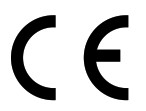Haier WCATB005 WiFi or Bluetooth Combo Module Instructions

Regulatory Module Integration Instructions
This Wi-Fi/Bluetooth Combo Module has been granted modular approval for mobile applications. OEM integrators for host products may use the module in their final products without additional FCC / IC (Industry Canada) certification if they meet the following conditions. Otherwise, additional FCC / IC approvals must be obtained.
- The host product with the module installed must be evaluated for simultaneous transmission requirements.
- The user’s manual for the host product must clearly indicate the operating requirements and conditions that must be observed to ensure compliance with current FCC / IC RF exposure guidelines.
- To comply with FCC / IC regulations limiting both maximum RF output power and human exposure to RF radiation, use this module only with the included onboard antenna.
- A label must be affixed to the outside of the host product with the following statements:
Product Name: Wi-Fi/Bluetooth Combo Module
Contains FCCID: ZKJ-WCATB005
Contains IC: 10229A-WCATB005
The final host/module combination may also need to be evaluated against the FCC Part 15B criteria for unintentional radiators in order to be properly authorized for operation as a Part 15 digital device.
Device Classifications
Since host devices vary widely with design features and configurations module integrators shall follow the guidelines below regarding device classification and simultaneous transmission, and seek guidance from their preferred regulatory test lab to determine how regulatory guidelines will impact the device compliance. Proactive management of the regulatory process will minimize unexpected schedule delays and costs due to unplanned testing activities.
The module integrator must determine the minimum distance required between the host device and the user’s body. The FCC provides device classification definitions to assist in making the correct determination. Note that these classifications are guidelines only; strict adherence to a device classification may not satisfy the regulatory requirement as near-body device design details may vary widely. Your preferred test lab will be able to assist in determining the appropriate device category for your host product and if a KDB or PBA must be submitted to the FCC.
Note, the module you are using has been granted modular approval for mobile applications. Portable applications may require further RF exposure (SAR) evaluations. It is also likely that the host/module combination will need to undergo testing for FCC Part 15 regardless of the device classification. Your preferred test lab will be able to assist in determining the exact tests which are required on the host/module combination.
FCC Definitions
Portable: (§2.1093) — A portable device is defined as a transmitting device designed to be used so that the radiating structure(s) of the device is/are within 20 centimeters of the body of the user.
Mobile: (§2.1091) (b) — A mobile device is defined as a transmitting device designed to be used in other than fixed locations and to generally be used in such a way that a separation distance of at least 20 centimeters is normally maintained between the transmitter’s radiating structure(s) and the body of the user or nearby persons. Per §2.1091d(d)(4) In some cases (for example, modular or desktop transmitters), the potential conditions of use of a device may not allow easy classification of that device as either Mobile or Portable. In these cases, applicants are responsible for determining minimum distances for compliance for the intended use and installation of the device based on evaluation of either specific absorption rate (SAR), field strength, or power density, whichever is most appropriate.
Simultaneous Transmission Evaluation
This module has not been evaluated or approved for simultaneous transmission as it is impossible to determine the exact multi-transmission scenario that a host manufacturer may choose. Any simultaneous transmission condition established through module integration into a host product must be evaluated per the requirements in KDB447498D01(8) and KDB616217D01, D03 (for laptop, notebook, netbook, and tablet applications).
These requirements include, but are not limited to:
- Transmitters and modules certified for mobile or portable exposure conditions can be incorporated in mobile host devices without further testing or certification when:
- The closest separation among all simultaneous transmitting antennas is >20 cm,
Or - Antenna separation distance and MPE compliance requirements for ALL simultaneous transmitting antennas have been specified in the application filing of at least one of the certified transmitters within the host device. In addition, when transmitters certified for portable use are incorporated in a mobile host device, the antenna(s) must be >5 cm from all other simultaneous transmitting antennas.
- All antennas in the final product must be at least 20 cm from users and nearby persons.
OEM Instruction Manual Content
Consistent with §2.909(a), the following text must be included within the user’s manual or operator instruction guide for the final commercial product (OEM-specific content is displayed in italics.)
Operating Requirements and Conditions:
The design of Wi-Fi/Bluetooth Combo Module complies with U.S. Federal Communications Commission (FCC) guidelines respecting safety levels of radio frequency (RF) exposure for Mobile devices.
Note: In the case where the Host / Module combination has been re-certified the FCC ID shall appear in the product manual as follows:
Contains FCC ID: ZKJ-WCATB005
Mobile Device RF Exposure Statement (If Applicable):
RF Exposure – This device is only authorized for use in a mobile application. At least 20 cm of the separation distance between the transmitting antenna device and the user’s body must be maintained at all times.
Caution Statement for Modifications:
CAUTION: Any changes or modifications not expressly approved by GE Appliance could void the user’s authority to operate the equipment.
FCC Part 15 Statement (Only Include if FCC Part 15 is Required on the End Product):
Note: This equipment has been tested and found to comply with the limits for a Class B digital device, pursuant to Part 15 of the FCC Rules. (OEM must follow Part 15 guidelines (§15.105 and §15.19) to determine additional statements required in this section for their device class)
Note 2: This device complies with part 15 of the FCC Rules.
Operation is subject to the following two conditions.
1) This device may not cause harmful interference, and
2) This device must accept any interference received, including interference that may cause undesired operation.
a. That module is limited to OEM installation ONLY.
b. That OEM integrators are responsible for ensuring that the end-user has no manual instructions to remove or install the module.
c. That module is limited to installation in mobile or fixed applications, according to Part 2.1091(b).
d. That separate approval is required for all other operating configurations, including portable configurations with respect to Part 2.1093 and different antenna configurations.
e. That grantee shall provide guidance to the host manufacturer for compliance with Part 15 subpart B requirements.
This device complies with Industry Canada’s license-exempt RSSs. Operation is subject to the
following two conditions:
(1) This device may not cause interference; and
(2) This device must accept any interference, including interference that may cause undesired operation of the device.
SIMPLIFIED EU DECLARATION OF CONFORMITY
The simplified EU declaration of conformity referred to in Article 10(9) shall be provided as follows:
Hereby, Haier US Appliance Solutions, Inc. declares that the radio equipment type Wi-Fi Module is in compliance with Directive 2014/53/EU.

| Support Standards: | WLAN, BLE |
| Frequency Range: | 2412 MHz to 2472 MHz, 2402 MHz to 2480 MHz |
| Maximum EIRP: | Below 20 dBm |